Seven Secrets of Successful Singapore Startups
And all the tools you need to get your foot in the door.
It's no secret that Singapore has, in the last couple of years, become something of an Asian hub for startups, thanks to a combination of a tech-savvy population, comparatively easy access to funding and a quality of life (and yes, favorable tax rates) that attracts overseas talent and investors. The Action Community for Entrepreneurship (ACE) recently called for a major review of its initiatives and barely a week goes by now without the announcement of another big buy-out of some young upstart (you can read all about this year's acquisitions at local tech and innovation blog e27.co). But what's really going on behind the million-dollar headlines? What do the successful startups have in common? Is it hype and hot air or hard work and honest labor? And what can you learn from them if you're thinking of starting up yourself? (Aside from the need to kit your office out with ping pong tables.) We spoke to more than a dozen of the biggest names in the scene to find out.
If you’re a multi-instrumentalist who writes songs for a living, you might be an amazing musician. And if you clock in more than 48 hours of coding a week across languages, you might be an amazing hacker. But if the goal is to found a startup, be prepared to be a jack of all trades. Advice from Derek Tan, co-founder of the fastexpanding indie film streaming platform Viddsee: “Don’t limit yourself to just being an artist or a programmer. I’m trained as an engineer, but I make films.” That said, it doesn’t matter what kind of million-dollar idea you have—having some programming knowledge is key (see video by Code.org). “I didn’t start off as a programmer; I was from business school,” says Bryan Lee, co-founder of Intraix (a nifty home energy management system). “I learnt iOS programming from my team because it’s important to have some basic programming skills so that if it comes down to it, you can create your own product easily. Outsourcing creates a lot of problems. It’s OK to know less, as long as you know some.”
Many of the companies we spoke to at the recent startup open house event Walkabout SG, described their first few months of work as being an excruciatingly painful experience. Intraix’s Lee even went so far as to say he wouldn’t want to do it again. “It’s a very tough process. You need to find a good partner. Two minds working together is fine, but three’s better because then you always have someone there to break up an argument or keep a discussion on track,” he says. It seems this formula works across the board—some of the most talkedabout startups in Singapore today, including mobile marketplace Carousell, online grocer RedMart and TaskAmigo, a Singapore-based task and errand platform, are run in threes.
A good idea—or several—can sustain a business. But Singapore’s game changers have rather different aspirations. DropMySite founder John Fearon—whose company is one of the biggest local startup success stories—defines startups as businesses that are trying to change the status quo, and are prepared to move fast and break things (a line also popular with Mark Zuckerberg). His cloud backup solution for email and websites recently won funding of up to $250,000 from prominent global seed accelerator 500 Startups, and is targeting a valuation between $10-50 million, a number you'd associate with Silicon Valley, not Singapore.
That said, starting a revolution doesn’t need to be complicated. “Many people here are just going for the cool, sexy stuff like loyalty programs, coupons and special boxes—you know, premium style—instead of addressing the basic needs,” says Vinnie Lauria, founding partner of Singapore-based seed fund Golden Gate Ventures. “Basic services may not be attractive to get into, but for an investor, that’s the sexy stuff. I would love to invest in something that’s just straight up e-commerce; selling a product with a stated price to an end user. Every startup I see now spend too much time in fluffy stuff like flash sales. Stop it—just stick to the basics.”
Clearly, tough times are inevitable when you’re an entrepreneur, so it's important to avoid burning out or worse, giving up. Several Singapore startups have got this down pat. “When things get crazy, we try to remind people why they’re in a startup—to enjoy bigger and more immediate gratification for hard work—and to have fun,” says RedMart's CEO Roger Egan. “We also bought a Nespresso machine to celebrate our 1,000th customer, maintain a well-stocked pantry and throw monthly pizza parties.” The team at online beauty store Luxola also goes the extra mile to have fun. According to their regional marketing director Camille Schu, the team goes on a treasure hunt slash pub crawl during Christmas time, and is moving into a big industrial space in June that will have all the works: couches in the lounge, makeup counters, ping pong tables and yoga mats.
Hugh Mason, CEO of one of Southeast Asia’s most successful seed accelerator programs JFDI.Asia, quotes emotional maturity and the willingness to put ego aside as key characteristics of a successful startup. He identifies “winners” not by their idea, but by how “coachable” they are. “We all have to take a few of life’s knocks to learn the lessons, me included!” he says. Vinnie Lauria reiterates this by saying that startups need to “not be full of themselves”. Humility is hard to measure, but many of the startups we spoke to, like Carousell and travel aggregator Flocations, used the term “flat hierarchy” in a matter of fact manner, insisting that everyone gets to express their ideas, which will all get a chance at execution. Roger Egan attributes much of Redmart’s success—they recently hit $3 million in annual revenue—to never thinking you know it all. “I’ve learnt that I have a lot I still don’t know in terms of being a CEO and that my team members are often the best source of learning,” he said.
“Your idea may be brilliant, but it’s probably not as unique as you think. 10 other people may have already thought of your idea. The key to success is execution,” says Jamie Wang, the director of P2P car rental platform iCarsClub. Every other Singapore startup we spoke to agrees. Said Viddsee’s Tan, “Startup success is 5% idea and 95% execution.” And again, it doesn’t need to be too complicated. Lauria is surprised that so many people come to him with only an idea: “Entrepreneurs need to have built some form of prototype before expecting to pitch. It just needs to address the point they’re going after and can even be put together by some third-party service. It doesn’t even need to look nice."
Advertisement
The largest tech conference in Asia (see video for 2012 highlights) is a dazzling and exciting showcase of the latest innovations—exhibitors flaunt their technologies at The Tech Alley, companies that have pitched at the pre-event Satellite events happening around the region go head to head for the Most Promising Startup award and big name investors sit on the panel discussing what may potentially be revolutionary ideas. The latest (and biggest) edition just passed—be sure to attend next year's, which we expect will have (and be) much more.
Founder and business networking rockstar Gina Romero says this monthly shindig is "like TED, but with beer", which it kind of is. After paying an admission fee of $25 (through online registration) that goes straight to the host bar churning out your two standard drinks, you'll get access to a captive audience of fellow business men plus presentations from industry bigwigs, Pecha Kucha style.
Started in New York by hot-favorite blogger Tina Roth Eisenberg, this free, monthly lecture series recently arrived here looking to catalyze the growth of the local creative community. The first event featured a 20-minute talk from art director and designer Felix Ng, filled with entertaining anecdotes about starting a creative business here—well worth the early start to the day for the brand managers, art directors and marketing professionals in attendance. Since then, the four-strong Creative Mornings team in Singapore has hosted the likes of multidisciplinary artist Dawn Ng, the APAC head of Trendwatching.com Tara Hirebet and kult's creative director Steve Lawler (see video). Speakers are keen to talk about their beginnings and early challenges so this is definitely the place to be if you're looking for inspiration of the "blood, sweat and tears" kind.
Since throwing open their doors, the folk at the Joyful Frog Digital Incubator have held an "open house" event every Friday, 5:30pm for entrepreneurs, investors and mentors to meet and talk about everything save for ranting about daily life. There's usually a good mix of newbies and senior people from the industry attending, making it a good chance to discuss problems, seek solutions and exchange useful contacts. Says CEO Hugh Mason, "Sometimes 20 folk show up and everyone gets to meet; sometimes we get to as many as 200 attendees and it's a different kind of party but somehow it seems to work."
You could be just about anyone interested in the startups scene—a reporter (like us), potential founder, hacker, designer, investor, adrenaline addict—and you'd stand to benefit a lot from this massive open house event held islandwide. You usually kick off the day at Blk 71 then move around the CBD area, visiting startup offices, which most likely are on standby with food, drinks and a trunkload of advice. It's organized by Thelist.sg's (our favorite Singapore website for tech events) Kristine Lauria, whose husband Vinnie Lauria is a founding partner of Golden Gate Ventures. We got to visit innovation superstars like Amazon Web Services and Airbnb at their last installment (see video for highlights shot on a GoPro)—consider this one unmissable.
Advertisement
Big Foot Industries
A one-stop shop for all the bare essentials of surfing and possibly the only physical store here that sells actual surfboards.
Quiksilver
This giant flagship store offers a tremendous range of clothing and accessories to get you in the mood.
Surfshop@WaveHouse Sentosa
Can at least help you look like a surfer with a generous range of fashion wear to choose from. Also, last minute rashguards are available here just before you enter the wave check-in area.
Advertisement
Colbar
This converted military canteen from the 1950s looks like it’s still stuck in the past, with much of the old structure and décor retained, and—get this—not an AC unit in sight. This paragon of vintage-chic looks innocent enough (the sign on its roof deceptively reads “Milk Bar”) but holds its own against the big boys, stocking a generous array of English beers and ciders (from $11) to go with its tasty local fare.
Da Paolo Bistro Bar
Drink till you see stars (literally!) at the outdoor patio of this colonial-style looker hidden amongst the lush foliage of Rochester Park. Though it’s a bit far away from the city, the chilled out atmosphere here makes the schlep worthwhile. Oh, and the drinks aren’t bad either. If you’ve ever wondered what a Chai High feels like, try the chai-infused gin cocktail ($22) to find out.
Tippling Club
With a name like that, we couldn’t leave out this Dempsey Hill favorite. It will move out of its current premise in September, so more reason to drop by sooner. The cocktail list here is still killer, we’re happy to report, with must-try classics like the Juniper Sling ($25), named after the Penhaligon’s perfume. Or just go wild and try the Fake Blonde ($21), a classy/trashy concoction of tequila, lime and beer that’s bound to get you into trouble.
Wild Oats @ Punggol Park
Bringing life to a sleepy neighborhood is never an easy task, but we think this cheekily-named bar-restaurant does the trick. Thanks to celeb chef Willin Low, this outdoorsy joint—think rattan chairs strewn casually across the grassy glade—attracts gourmands from all over the island who make their way here for fusion bites and exotic booze like lychee beer ($11.50).
Advertisement
This March, our friends in the restaurant industry were all gossiping about the same thing. “The Michelin inspectors are in town this week,” they would say, conjuring up images of grumpy Ratatouille-esque food critics slipping quietly into restaurants throughout town. Bangkok has long been enamored with Michelin chefs, despite the French restaurant guide not covering our city. Chefs from Michelin-star restaurants regularly visit Bangkok’s five-star hotels and at least a dozen chefs based here have previously worked at Michelin-star restaurants. Some restaurants, such as Nahm, Yamazato, Sra Bua and D’Sens, are even spinoffs of restaurants in London, Amsterdam, Copenhagen and Montpellier respectively that have held, or still hold at least one Michelin star. But is Bangkok ready for its own Michelin guide? Who here deserves a star—or three? How will we fare compared to Kuala Lumpur and Singapore? Can we even afford this level of dining? And would the guide be relevant given Michelin’s hotly debated track record with Asian cuisines?
Michelin did not respond to our emails, so their imminent arrival is just a rumor at this point. But industry insiders believe a guide for Singapore, Bangkok and Kuala Lumpur is in the works with a scheduled release in 2014. Much of this speculation follows the announcement made by PACE Development Corporation Plc that Joel Robuchon, the chef with the most Michelin stars, would open at CUBE, the retail wing of the Mahanakorn building. “Robuchon and Michelin are very tight,” says Oliver Kramny of the Water Library group, whose flagship is located in Grass Thonglor. “When Robuchon arrives in town, Michelin always follows.”
Water Library is betting big on Michelin’s arrival. They have signed up Juan Amador, whose restaurant earned three Michelin stars in Langen, Germany. They plan for the chef to open five restaurants in the region, including two in Bangkok: one-fine dining venue and a more low-key restaurant. “The aim is to get three stars for one place and perhaps one star for the other,” says Kramny. The new Central Embassy mall, set to open this December, is also rumored to be pushing hard for a Michelin-star chef to get on board, if not in the mall, than at least in the adjoining Part Hyatt Hotel due to open in October 2014.
Were the Michelin Guide to sweep into town, it would not just be awarding out-of-town talent. Existing restaurants should get stars, too. Speculation is rife as to who would actually get a star, though. Chatree Kachonklin, of La Table de Tee, worked at one-star restaurant Roussillon, in London, and he thinks Ian Kittichai would be a likely candidate. “If a Thai chef got some stars, it would be so exciting,” says Chatree. “It would be a huge encouragement for all Thai chefs in the country.” While he is confident in local chefs’ ability to seek out the best local produce, Chatree is quick to add that cooking it is another matter: “Michelin-starred restaurants also really excel at the cooking technique and art part. And if they come here, it’s a chance for Thai chefs to understand that side of cooking. It’s exhausting but it’s fun.”
The Okura Prestige hotel's Elements restaurant's chef, Cyril Cocconi, who has previous experience working under multi-Michelin-star powerhouse Joel Robuchon is betting on another Thai restaurant, the Metropolitan Hotel's Nahm. Headed by David Thompson, Nahm had a Michelin-star in London, before he relocated the restaurant to Bangkok. "He makes really amazing food," says Cocconi. "And he's able to source all the best produce."
Pressure on finding that good produce will quickly mount, though. Chatree’s daily morning routine is to scour four different markets for his ingredients. “Lots of great local ingredients exist, but most go to the hotels. It’s a who-pays-more-gets-more system,” he explains. Chef Herve Frerard, of Le Beaulieu, who has long been described as one of Bangkok’s most serious contenders for a Michelin star, concurs. “I’m a consultant for the Royal Projects,” says Frerard. “So I get first pick for a lot of things. But honestly, I still have to import a majority of my produce. There's just no consistency here.”
Duangporn "Bo" Songvisava, who worked at Nahm in London, is now chef at Bo.lan (along with her husband, Dylan Jones) and recently won The Veuve Clicquot World's Best Female Chef Award. She thinks standalone restaurants may actually be at an advantage over hotels. "There's fantastic produce here. You just have to order it directly from small producers, and hotels just can't do that, because they order such big volumes."
Quince's Wilfrid Hocquet is another French chef with a star-filled resume that includes time working for Michelin superstar Alain Ducasse and the Pourcel Brothers (chefs of one-star Le Jardin des Sens, in Montpellier). Having recently arrived in Bangkok, Hocquet admits he was struggling to find not just produce, but also staff. "When the going gets rough, staff will just quit. It's very hard to get them to change how they work," he says. The soon-to-open Ku De Ta deployed a full-fledged marketing campaign to hire the 400 staff needed to properly run its restaurants and nightclubs. "To train staff is hard. To retain them is even harder," says Duangporn.
Gaggan Anand, of contemporary Indian restaurant Gaggan, thinks the front of the house will be the biggest challenge. “You’ll see Thai smiles as soon as you get off the plane at the airport, but the biggest disadvantage when the Michelin Guide arrives is probably the language barrier. Still, if Tokyo didn’t get penalized for that, then the Michelin Guide should respect our culture too,” he says.
One other crucial element might also be missing: diners. Imported franchises typically struggle in Bangkok. D’Sens, Zuma or Grossi never attract the kind of crowds you’ll see at Gianni's or Le Beaulieu, both of which are headed by charismatic chefs who know how to work the tables. “In Singapore or Hong Kong, seeing the chef is not that important,” says Water Library's Kramny. “But in Bangkok, the chef has to be there.”
There’s also the question of cost. “To get Joel Robuchon is so expensive. Even if he does get his three stars, you’ll never get your money back. To open a Robuchon restaurant is at least 1.5 million dollars [B45 million]. Half of that goes to Robuchon. Then there's the equipment he expects, the salary of a good head chef... The costs are very, very high,“ says Kramny.
“49 percent of my cost is produce. I’d be fired immediately if I worked in a hotel. The costs of running this restaurant are huge because I love great produce. But people call me expensive or overpriced,” says Beaulieu's Frerard. "I'm lucky to have been here 15 years, and I have a hiso clientele. But you can't charge much more in this town than what I'm charging, which is B2,500 to B3,500 per person for the food alone."
At those prices, can fine dining turn a profit? Not according to Kramny, who says, “Three-star Michelin restaurants aren’t designed to make money. The money comes from merchandising, like books, or engagements for the chef. Usually, the place is subsidized by the hotel or owner somehow. It’s a vanity thing.”
The other big question is whether Bangkokians will even care about Michelin's arrival. Michelin’s first Japan guide was panned by some critics for being out of touch and irrelevant. With so many fantastic tiny eateries in every little back alley of Tokyo, Michelin was accused of missing out on the dining scene outside of the high-end establishments. Celebrity Chef Bobby Chinn adds that Michelin's obession with silverware and sommeliers isn’t what’s hot these days: “If you fast forward to look at what’s going to happen in the food world, it’s moving to the street.”
“No one can compete with our street food,” says Gaggan. But the chef believes Michelin just might be able to tap into that. “I tried a Michelin-starred ramen restaurant in Japan. It was perfect. And I hope that they will understand our khao mun gai shophouses, too, as it’s all about the same dedication.” Will your favorite restaurants—and khao mun gai stalls—get the stars they deserve? Maybe not all. But the red book is bound to move our dining scene forward.
Gaggan
68/1 Soi Lang Suan, 02-652-1700. Open daily 6-11pm
Elements and Yamazato
The Okura Bangkok, Wireless Rd., 02-687-9000
La Table de Tee
69/5 Soi Sala Daeng, Silom Rd., 02-636-3220. Open Tue-Sun 6:30-10:30pm
Bo.lan
42 Sukhumvit Soi 26, 02-260-2962. Open Tue-Sun 6:30-11pm
Le Beaulieu
G/F, Athenee Office Tower, Wireless Rd., 02-168-8220-3. Open Tue-Sun 11:30am-2:30pm, 6:30-11:30pm
Water Library
The Grass Thonglor 12, 02-714-9292. Open Mon-Sat 6pm-1am. 2/F, Chamchuri Square, Rama 4 Rd., 02-160-5188. Open daily 11:30am-2:30pm, 6-9:30pm
Quince
Sukhumvit Soi 45, 02-662-4478. Open daily 11:30-1am
D'Sens
22/F, Dusit Thani Hotel, 946 Silom Rd., 02-200-9000. Open Mon-Sat 11:30am-2:30pm, 6:30-10pm
Nahm
G/F, Metropolitan, Sathorn Rd., 02-625-3333. Open Mon-Fri noon-2:30pm; daily 7-11pm
Sra Bua
1/F, Siam Kempinski, 991/9 Rama 1 Rd., 02-162-9000. Open daily 11am-2pm, 6-10:30pm
Advertisement
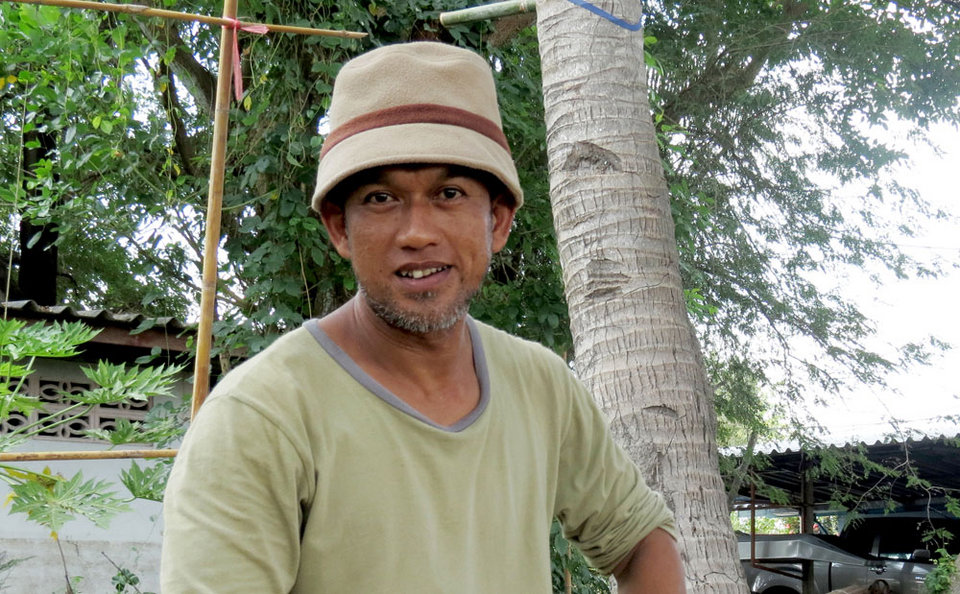
Prakiat worked in artisan fishing for more than 20 years, helping local people on the Andaman coast set up more sustainable practices—using the right fishing equipment and taking care of the coast. Now he does direct trade with the fishermen and builds awareness of ecological issues through the Thai Green Market (www.thaigreenmarket.com) collective.
“It’s very difficult to know which vendors at the market use formalin to preserve their squid. It makes the squid stiff and white, but it’s still not easy to be sure. If you try asking the vendors where they get their squid from and how, most couldn’t care less.”
What can you do?
If you’re shopping at an organic store, don’t just believe the signage “plod saan (chemical-free)”—the shop owners need to know where the produce comes from and what equipment was used. A lot of squid is illegally caught using trawl nets which have a negative impact on sea life.
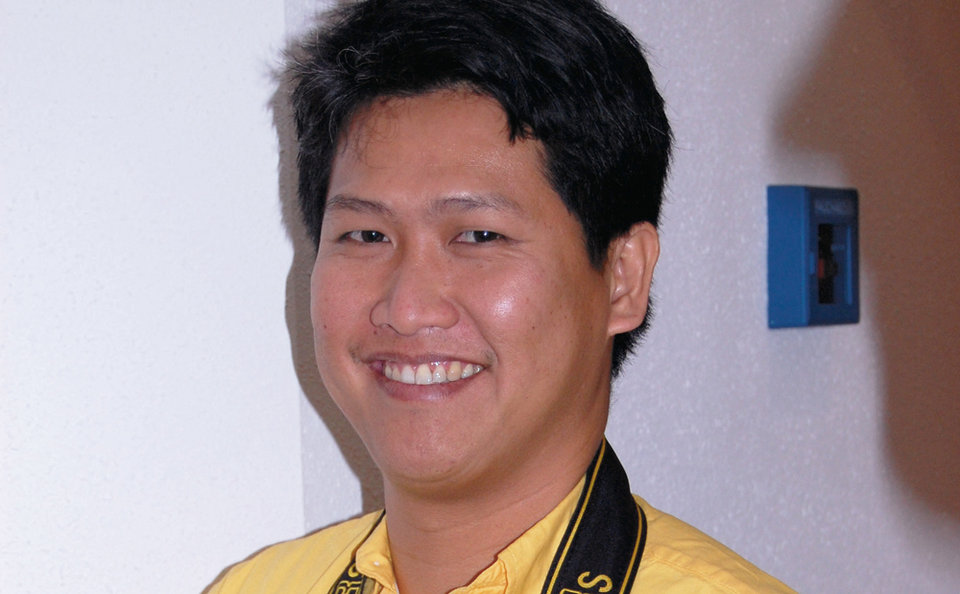
Running probably the only prawn farm (www.sureerathprawns.com) in Thailand that is certified by the International Federation of Organic Agriculture Movements (IFOAM), Krissada is helping his father to continue their organic farming philosophy in Chantaburi.
“Most shrimps come from industrial farms where many shrimps are packed into one small pond. As overcrowding leads to poor water quality, due to decreased oxygen level, it’s common for aquafarmers to pump in oxygen and to treat the pool with chemicals. Most chemicals don’t harm humans, unless there are certain drugs involved, which could cause cancer in the long-run. And some farms are also harmful to the environment. Even though it’s illegal, in reality, the waste, which is full of chemicals, is still being dumped into nearby natural waterways where it will inevitably affect mangrove forests and sea life.”
What can you do?
The law doesn’t really help with this matter and there’s little demand from consumers. If the law doesn’t change, it will be hard to encourage farmers to uses organic practices. It costs a lot so there needs to be pressure placed on the government or supermarkets by consumers. Organic seafood has a long way to go before it reaches the sort of groundswell of support that organic vegetables garner.
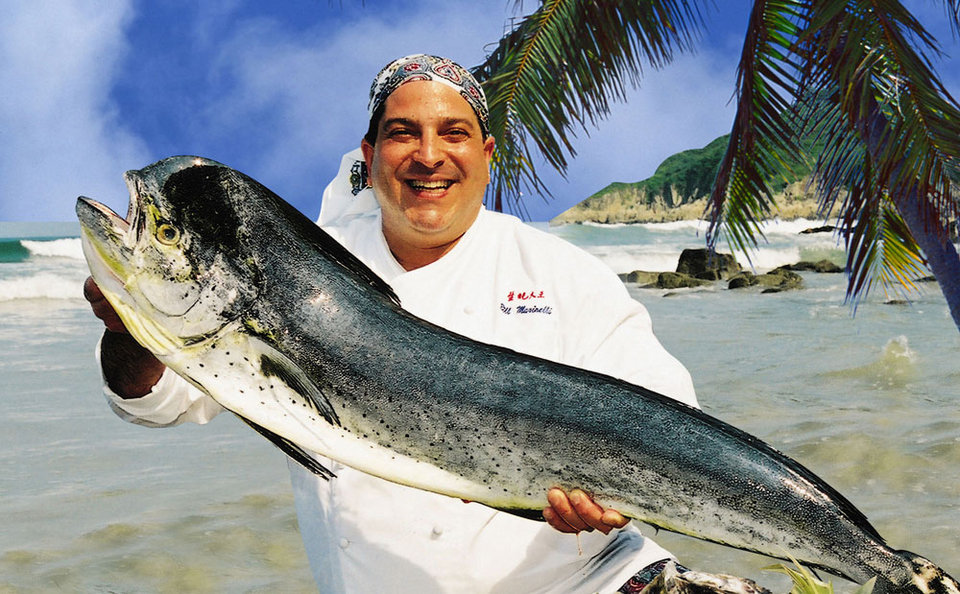
Bill Marinelli doesn’t serve farmed seafood in his restaurant The Oyster Bar (395 Narathiwat Ratchanakarin Soi 24, 02-212-4809. Open Tue-Sun 6-11pm; Sun noon-3pm) nor did he at his recently closed The Seafood Bar, proving that where there’s a will, there’s a way for sustainable seafood to gain a foothold.
“Most farmed fish is unsustainably grown. For example, it takes three kilos of fish to grow one kilo of farmed salmon. And it’s extremely unhealthy to eat as it’s high in polychlorinated biphenyls, much higher than the US Food and Drug Administration recommends. Farmed salmon also contains antibiotics to keep them healthy and growth hormones to make them grow quickly—we’re not sure how dangerous these are yet as data is still being collected. Due to their diet, the farmed varieties don’t contain the healthy omega-3 fatty acids that wild salmon do, either.”
What can you do?
Stop eating farmed salmon.
The salmon you see on menus everywhere, including buffets, is farmed. No one’s serving wild salmon in Bangkok due to the high prices. If consumers stop ordering salmon, hotels and restaurants will stop buying it and serve fish that is more sustainable and economical.
Ask how the fish was caught.
If the chef or waiter can’t tell you how the fish was caught—order something else.
Stop eating “snowfish.”
“Snowfish” is actually an endangered species also known as Chilean seabass or Patagonian toothfish. The snowfish served here in Thailand is caught illegally, and not regulated by the Thai FDA or the customs department.
Advertisement
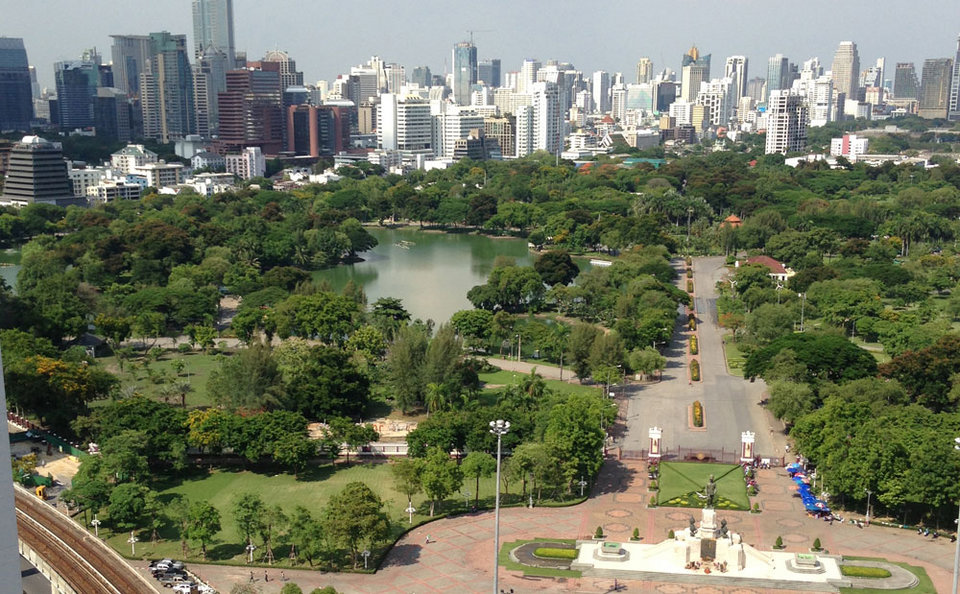
Specs: 8MP iSight camera, 3264x2448 with auto-focus, panorama view and LED flash
The test: The images taken from the iPhone 5 were impressive with great contrast and clarity, and little to no white noise. Even small details on things like cars and trees came out sharp. Despite a little lag in shutter speed, the iPhone 5’s camera has good color depth. Unfortunately, there’s no image stabilization, so when you zoom in it’s hard to get the camera to focus.
Verdict: The best of the bunch, the iPhone 5’s camera gives us very little to complain about—its 8MP camera is actually better than most 13MP cameras on the market.
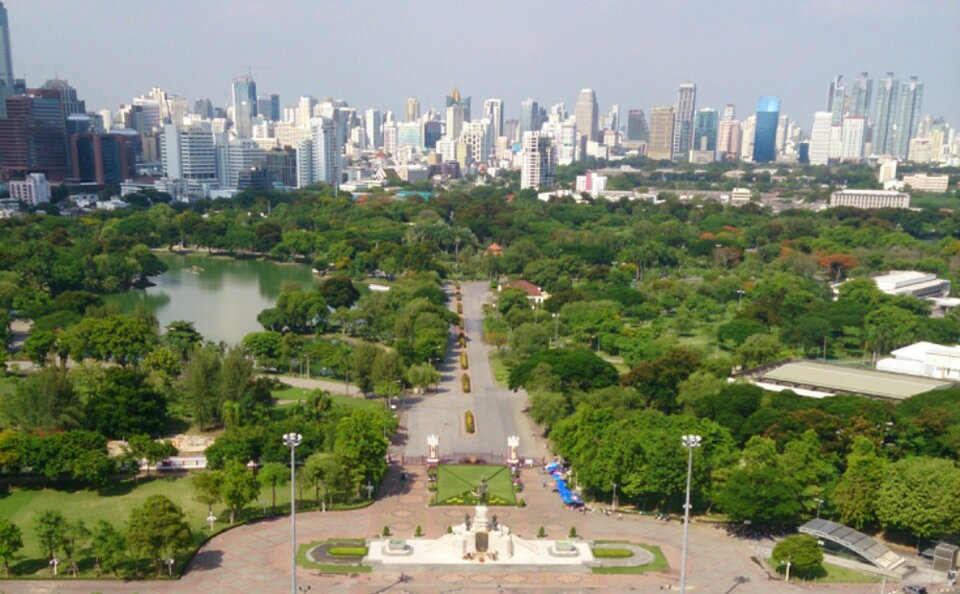
Specs: 13MP camera, 4128x3096 pixels with auto-focus, LED flash and Exmor RS Sensor
The test: Sony is pretty reputable when it comes to cameras, but this doesn’t seem to be the case with the Xperia Z. The images have nice contrast and vibrant colors, but the clarity of its 13MP camera is rather disappointing, so that even when in-focus the pictures seem a bit fuzzy and dark. It’s also one of those phones where the picture looks better on the screen before you actually take it.
Verdict: We expected more from a 13MP camera; that being said, it is the only one of the bunch that allows you to take photos underwater.
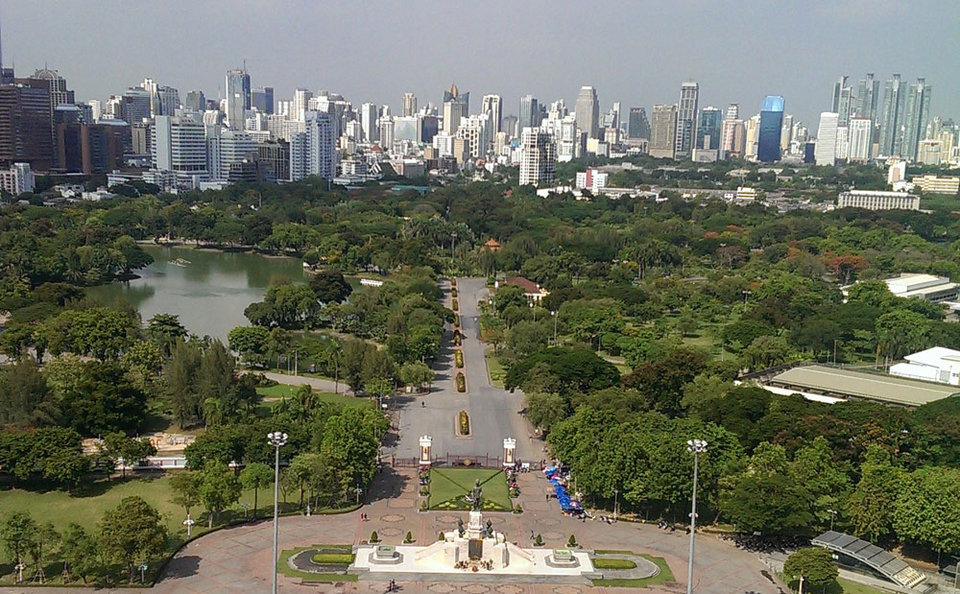
Specs: 4MP camera, 2688x1520 pixels with LED flash
The test: The images from the HTC One came out a bit over-saturated with low contrast, and when blown up and viewed on your computer, the noise is very noticeable. The only thing we like about this phone’s camera is the lag-free shutter speed.
Verdict: The worst of the bunch with pictures lacking both brightness and clarity. See our full review below.
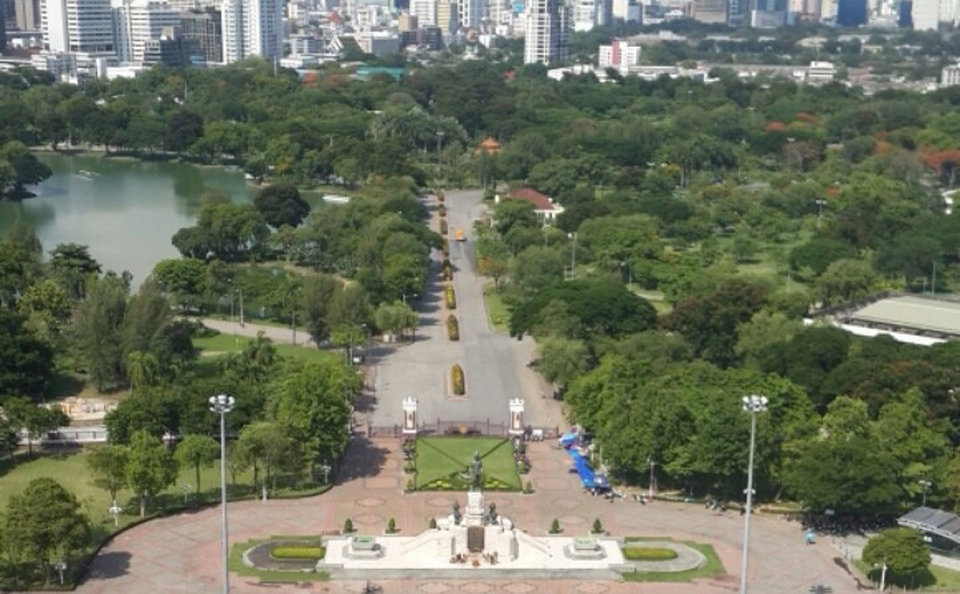
Specs: 13MP camera, 4128x3096 pixels with auto-focus and LED flash
The test: The Galaxy S4’s images are clear and vibrant with good contrast, and very low noise even when viewed on a computer. The lag-free shutter speed is equally impressive. However, we find that the pictures are a tad too bright and unnatural looking. It’s also tricky when you’re trying to focus on small details.
Verdict: A runner up, the Galaxy S4’s camera is definitely a solid option. Plus, with its 5-inch screen, your pictures look quite vivid. n
Advertisement
Artist: Secondhand Strings
Label: Independent
We start this All Ears with an interesting project launched by Bedroom Studio which sees them invite independent artists to send in songs inspired by their favorite movie. The first single, “Jennifer’s Body” by EE-Pavo (a solo project of Believe Records’ O-Pavee), has already cracked Fat Radio’s top 40 chart. But for us the real stand-out so far is “Into the Wild” by Secondhand Strings (member of indie folkers Part Time Musicians). It starts out as a simple, hauntingly sparse folk tune before the acoustic strumming gives way to a wall of distorted electric guitar. The track’s slow-building tension is befitting of the epic 2007 biopic directed by Sean Penn—if someone told us that it came from the original soundtrack, we would totally believe them.
Artist: Pae Arak
Label: Believe Records
Since striking out solo (and further building his reputation as the face of everything, ever), Arak “Pae” Amornsupasiri has endured constant comparisons to his old band, indie-rock heavyweights Slur. But this fifth single from his album with the Peesaj Band is pretty convincing in its own right. Even though his huge fan base is likely to lap up anything he puts out, “Microwave” really is a pleasant and catchy number. Armed with little more than an acoustic guitar and a mouth-organ, Pae sings lyrics that cleverly compare the growth of a relationship to microwave-cooking. Re-heated leftovers, this ain’t.
Artist: Pluto21 Studio
Label: Independent
“Seang Ar-Kad” [Sound of the Space] is another track to emerge from a Bedroom Studio project (different to the one above) and find a place in the Fat Radio chart. The understated electro-pop ditty comes courtesy of Juk Tongma and Atiwut Tima, a pair of Khon Kaen University students who go by the name Pluto21 Studio. It finds the duo delivering a moody, atmospheric sound that matches lyrics describing the feeling of floating in space. The single is yet more proof of the up-and-coming music scene in Khon Kaen as it seems like every week we’re unearthing new gems from this part of the world.
Artist: Summer Dress
Label: Panda Records
A few months ago, we picked Summer Dress as one of the bands to watch this year, so we’re as relieved as anyone that “Ratree” delivers on the hype. Not that there should have been any doubt. This latest recording finds the Panda Records five-piece making good on their stellar rep as live performers. The energetic yet restrained track finds the band’s guitar-pop take on a shuffling, disco-like quality that will get you moving. While the lyrics that tell of a guy waiting for the right time to meet his crush in a dream may be a bit heavy-handed, they’re made all the cuter by the female backing vocals and the the Two Door Cinema Club-esque melodies.
Advertisement
22
This snazzy little bar tucked amongst the dodgy shops along Mosque Street may be low profile (they don’t have a website or Twitter) but it boasts plenty of art cred, being the brainchild of Malaysian designer P.C. Ee. This small, speakeasytype space is packed with plenty of style, bearing lots of unfinished brick, concrete and metal for an industrial-chic vibe, which make a great backdrop for the underground art it showcases, such as the work of Thai graffiti artist P7. Complete the experience with Thai bites and cocktails ($15) created with Asian ingredients like pandan syrup, lemongrass and bandung.
7adam
Situated atop a hill off Adam Road in a tranquil black-and-white colonial building, this not-sohidden gem is a fusion bar-restaurant that doubles up as an art gallery. Coming here feels a bit like stepping into a moneyed art connoisseur’s house, what with paintings on the walls and sculptures displayed quite nonchalantly in various rooms. Swing by before July 23 and you’ll catch an exhibition of Malaysian artist Eng Tay’s Boteroesque works, inspired by and revolving around the concept of family. Although it’s best known for its European-Asian food, we’re certain appreciating the artwork here with a glass of wine or two wouldn’t go down too badly either.
The Vault
As if being one of the mpst popular bars in town wasn’t enough, this Chinatown joint has been hitting the sweet spot between corporate-chic and indie-cool lately. With its rotating showcase of local contemporary art, bimonthly Sunday Artists Market (next one’s on June 2, 11am) and flash mob art performance Stand Up For Artists Rights! (just past), it’s now steadily becoming a hangout for local music, art and fashion types. (Adorning the walls right now are Amanda Ang’s (An Everyday Muse) pieces.) The drinks aren’t terribly inventive, but you’ll want them handy as you join in the ruckus—the monthly exhibition openings are a great excuse to drop by.
Mad Nest
Well known to Easties, this airy restaurantgallery along East Coast Road is one of the few art spaces in an area almost totally dominated by food. It’s no surprise that the menu is staggering and covers practically all the bases, from Italian to Japanese to North Indian food, and that the drinks list is equally diverse. (They’re tweaking the alcohol menu right now, but we hope the fun craft beer and cider selection stays.) Artistically, the stuff on show here veers towards the friendly and harmlessly quirky—the kind of inoffensive stuff you’d buy as a gift, perhaps. Case in point: the current exhibition (through May 30) features illustrations based on street style snaps on websites like Shentonista and Sartorial Daily.
Advertisement
Domaine du Grand Veneur Cotes du Rhône Cuvée Réserve 2011
This intense red is a blend of four different varietals: grenache noir, syrah, cinsault and mourvèdre. Timothy Goh, director of wines for the Les Amis group says, “This bottle is made by a respected family Jaume, who have been producing wine in southern Rhone since the 19th century. It has rich and bold flavor yet exhibits elegance, quality and approachability even at a young age.”
$68 at Caveau Wines Bar
Domaine Leflaive Macon-Verze 2009
This is a white wine from Burgundy is made from chardonnay grapes. Gerald Lu, general manager and head sommelier at Praelum, says, “Not only is it complex and flavorful, the high acidity goes well with several foods and even works on its own. It’s easily one of the best value-for-money and powerful wines around.”
$85 at Praelum Wine Bistro
Triennes Merlot 2009
Made by the folks behind noted Burgundy wine producers Domaine Dujac and Domaine de la Romanée- Conti, this medium bodied red boasts a lovely ruby color and rich dark plum and cherry aromas.
$63 at Onaka@ARC
Advertisement